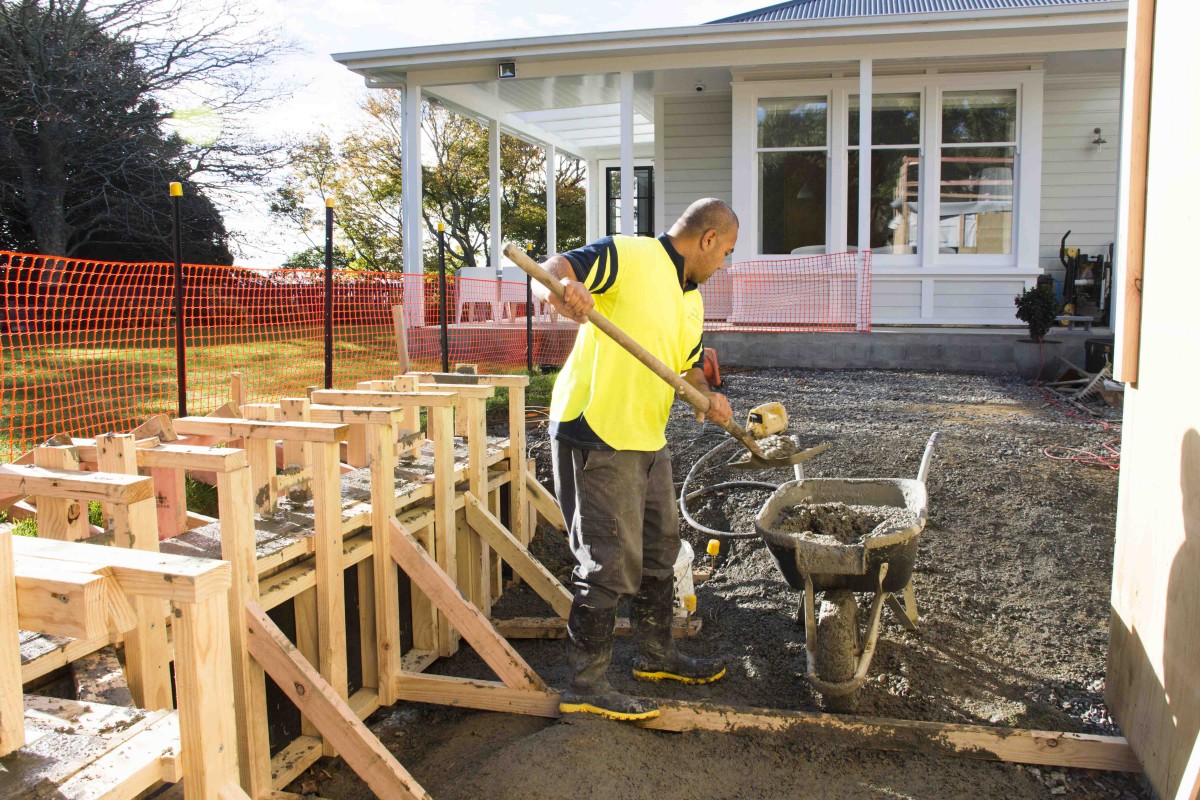Exempt building work – Part 1
18 Jul 0201, Building and housing, Featured, LBP & Regulation, Prove Your Know How, Technical

As promised, Under Construction will be including all compulsory Codewords articles to help LBPs earn their required points and stay up to speed with changes. This month’s article is required for carpentry, foundations, site and design licence holders
Under the new skills maintenance scheme, reading Codewords articles relevant to your licence and answering the corresponding questions is a mandatory part of skills maintenance (for those who have renewed their licence since 2 November 2015). Once you’ve read the article, answer the questions below.
Do you need a consent?
Checking if you need a building consent is an important step in any building project. If a building consent isn’t issued and was required, the council may issue an infringement notice or seek to prosecute the homeowner (with possible heavy fines), who is then likely to want answers from you.
The homeowner has the ultimate obligation to obtain all required permissions and consents – they can do this themselves, or get someone to do it on their behalf.
Carrying out work without first obtaining a building consent is a common failing, according to the Building Practitioners Board (the Board), and this is taken into consideration when acting on complaints against LBPs. We want to help make sure you don’t make this mistake.
This article will introduce exempt building work and some of the common and measurable exemptions.
Section 41
Under the Act, all building work requiresa building consent, unless it is covered by sections 41 and 42A of the Act. Work covered by section 41 is known as exempt building work, which means it doesn’t require a building consent.
Section 41 recognises that a number of things considered ‘building work’ are low risk. It allows for a list of building work that doesn’t require a building consent under Schedule 1 of the Act. If your building work isn’t covered by an exemption, you must make sure there is a building consent before you begin work.
All building work must comply with the Building Code, regardless of whether a building consent is required.
Schedule 1
Schedule 1 lists the items of exempt building work. If you’re working outside of those items listed, you need to obtain a building consent before beginning work. Below are some generalised examples; however, always refer to Schedule 1 for details of what’s exempt and what’s not.
Exemption 3 – Single-storey detached buildings not exceeding 10m2 in floor area
You’re able to build some single-storey detached buildings such as sheds, cabins or sleep outs with a net floor area (total usable floor area within the enclosing walls) of less than 10m2 without a building consent. There are exceptions, for example, it cannot include any sanitary facilities.
If the building has a net floor area of more than 10m2 or it does not meet the details of the exemption, it will need a building consent. This structure also cannot be closer to the boundary or any residential building than its total height. In this case, you’ll need a building consent.
Exemption 20 – Retaining walls
A retaining wall does not require a building consent if it is retaining less than 1.5m of ground and does not support a surcharge. A surcharge is an additional load on the land, such as a car park or driveway, a slope or a building (Schedule 1 guidance provides more detail).
Exemption 21 – Fences and hoardings
You can build a fence or a hoarding up to 2.5m above the supporting ground without a building consent. However, you still need to comply with requirements of the Fencing Act 1978 for boundary fences and, in many cases, with district plans. This may mean a resource consent is required if the fence is above 2m in height.
Exemption 24 – Decks, platforms, bridges boardwalks, etc
Building work in relation to a deck, platform, bridge, boardwalk or the like does not require a building consent as long as it is not possible to fall more than 1.5m from that surface, even if it collapses.
You’ll still require a safety barrier where there is a potential fall of 1m or more, but no consent would be required given the above.
Next time…
The next article in our Exempt Building Work series will cover off some of the more complex exemptions. Full details and examples of exempt building work can be found in the guidance provided on MBIE’s Building Performance website.
Please note that this guidance will be updated to include exemption 21A – Means of restricting access to small heated pools.
This article first appeared in Codewords – Issue 78
Register to earn LBP Points Sign in
8 Comments
Leave a Reply
You must be logged in to post a comment.




Good quiz
GREAT QUIZ
Good Quiz
Awesome quiz
Yes
beauty
great quiz
one question may be out dated now , the sleepout one